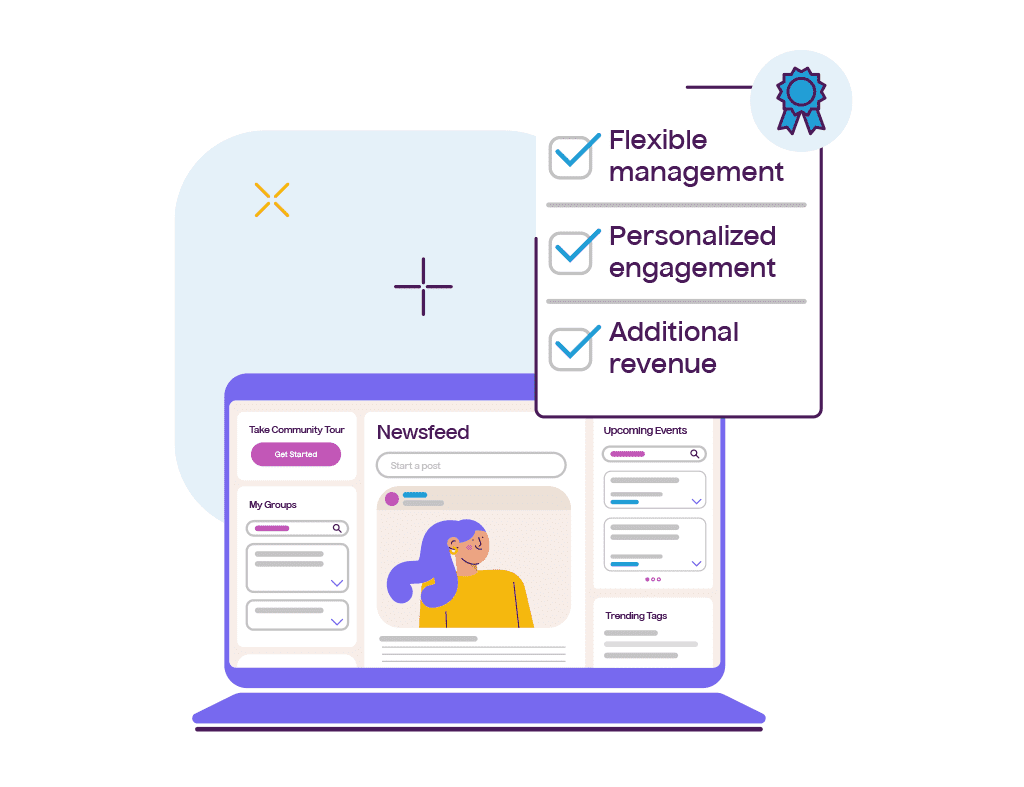Are online communities a nice-to-have or a need-to-have?
For your association or nonprofit, anticipating and fulfilling your member’s needs is a high priority to retain members and boost new member registration. So, the question is – does having an online community contribute to your member needs? What are the benefits of online communities?
Well, when you look at the data, members of associations and nonprofits want to be involved in online communities. In a recent webinar, we talked about how association professionals saw their website’s “members-only” section grow to 56%, up from 44% the previous year. We also saw that 76% of internet users participated in an online community in 2020 and 44% said it was more important to have an online community in 2020, according to The Journey Ahead: The Future of Associations, Nonprofits and Events.
Between these findings and the increase in emerging data about members utilizing online communities, it seems to me that an online community should be a need-to-have when considering your budget for 2023. But other than showing your board and staff the numbers, how can you convince them to take the leap?
We advise keeping these benefits top-of-mind when building a case for your online community to your board and creating an online community your members love to use.
1. Members want online communities
As we’ve already seen from the 2021 Membership Marketing Benchmark Report, sections of your website that are dedicated to members only are increasing in popularity and usage. This report also notes that 71% of associations experienced an increased level of engagement by their members. A recent survey of nearly 1,000 association members and staff came to similar conclusions. Clearly, members are wanting to engage with their associations and believe it is vital for associations to have a community for their members to network and connect. An online community provides better learning opportunities, more connections, and better communication. If you don’t create this space for them, they’ll create it themselves. This makes it harder for your team to influence, and you lose valuable moments to connect and further the mission’s brand.
2. Managing your online community is more flexible than ever
This all sounds great, right? A space for your members that you know they want, they will utilize, and provides more value to their experience. But what kind of resources are needed for this community? The good news is managing online communities is more flexible than ever.
Here are a few ways we’ve seen organizations manage their online spaces:
Hiring a dedicated community manager
- A community manager will take on all aspects of your online community. They will grant access to the community, help set up member profiles and answer member questions. They will also be responsible for providing new content from the association that is relevant for members and keep them informed about upcoming events.
- This is also possible with a part-time community manager. If you have a smaller budget or a smaller pool of members, a part-time CM could be perfect for your online community.
Utilize your current staff
- We’ve seen that a lot of marketing roles in associations align with the responsibilities of a community manager. By tag-teaming your current staff to help with all the aspects of an online community, you will be able to save your budget and create a stronger sense of unity between your current staff and members.
- We dive deeper into this idea in our guide “No Community Manager? No Problem?”
Put together a small volunteer team or committee
- A small group of individuals who love the idea of a collaborative space to network and connect with others will most likely love to help with your online community. They can be your committee members to manage the community and handle administrative duties.
The bottom line is that one of the biggest barriers to managing online communities is now gone as organizations of all sizes have proved that online communities can be successful with various management approaches.
3. Online communities can be cost-effective and revenue-generating
One of the most significant benefits of online communities that should be mentioned when pitching the idea to your board is the financial opportunities. Utilizing the discussion boards for non-dues revenue opportunities like learning courses and featured jobs is easy and effective. Members are already active on the discussion boards to connect with other members, promotions and updates about the association will be easily seen by your main audience.
An online community is also a space where you can store all your documents and content for your association. This can save you money on storage applications like Dropbox. In fact, the National Association of Nutrition Professionals (NANP) saved over $1,600 a year after using an online community to store and share all their online documents. An extra plus to keeping all your documents in your online community is that you will have full control over who accesses them, keeping members-only and board-specific content secure.
Ready to dive in?
To hear more about the benefits and why online communities are becoming a “need-to-have” for associations and nonprofits, join industry experts, Don Knox, Executive Chair for Civica Associations Conferences and Exhibitions, and Ashly Stewart, Marketing Manager from Personify, for the webinar, “The Online Community Advantage” on 10/18 at 12:30 p.m. ET.
